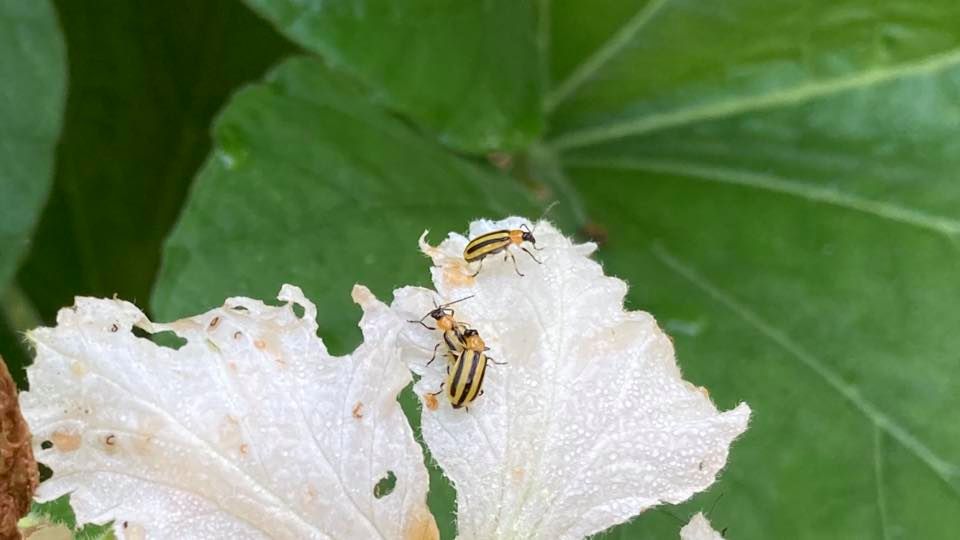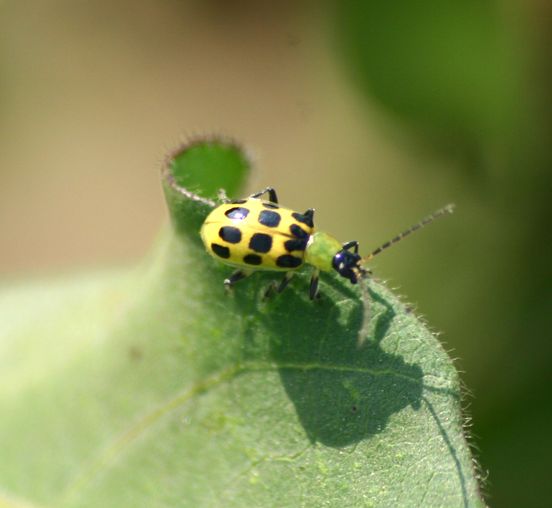
Cucumber beetles, with their striking yellow and black stripes, are deceptively beautiful pests that can wreak havoc on your garden. These beetles not only feed on the foliage of cucumber plants but also carry diseases like bacterial wilt and cucumber mosaic virus, posing a significant threat to your crops. While chemical pesticides can be effective, they often come with unwanted side effects, including harming beneficial insects and contaminating the soil.
Fortunately, there are numerous natural methods to control and eliminate cucumber beetles that are both environmentally friendly and effective. In this article, we’ll explore a variety of natural ways to get rid of cucumber beetles, ensuring your garden thrives without resorting to harsh chemicals.
This post may have affiliate links. This means that sometimes when you click a link on our site and make a purchase on Amazon, we may earn a small commission at no additional cost to you. We only recommend products we truly believe in, and your support helps keep us running!
Understanding Cucumber Beetles

What Are Cucumber Beetles?
Cucumber beetles are small, yellow-green insects with black spots or stripes. There are two main types: the striped cucumber beetle (Acalymma vittatum) and the spotted cucumber beetle (Diabrotica undecimpunctata). Both types are common in North America and are notorious for their destructive feeding habits.
Why Are They Harmful?
Cucumber beetles primarily attack cucumber plants but are also known to target other cucurbits like squash, melons, and pumpkins. They chew on leaves, flowers, and fruits, causing direct damage to the plants. More alarmingly, they spread bacterial wilt and cucumber mosaic virus, which can decimate entire crops.
Disrupting the Beetle Brigade: Targeting Their Weaknesses
1. Outsmarting the Egg Layers
Cucumber beetles love to lay their eggs at the base of your precious plants. Here’s how to make their baby-making mission a bust:
- Fortress of Fabric: Fashion a floating row cover from breathable fabric. This physical barrier keeps adult beetles from reaching the base of your plants, hindering their egg-laying plans. Remember to remove the covers during flowering to allow for pollination.
- Aluminum Armor: Create a reflective barrier by placing aluminum foil (shiny side up) around the base of your cucumber plants. The flickering light disrupts the beetles and discourages them from laying eggs.
2. Confusing the Cucumber Cravers
Cucumber beetles, as their name suggests, are drawn to the vibrant yellow of cucumber flowers. Use this to your advantage with some clever trickery:
- The Decoy Squad: Plant decoy crops like marigolds or nasturtiums around your cucumber patch. These cheerful flowers, with their similar yellow hues, will attract the beetles first, keeping them away from your precious cucumbers.
- Sticky Shenanigans: Deploy yellow sticky traps. These vibrant traps mimic cucumber flowers and act as a one-way ticket for unsuspecting beetles.
3. Unleashing Nature’s Defenders
Your garden can be a haven for beneficial insects that prey on cucumber beetles. Here’s how to attract these helpful allies:
- The Pollinator Posse: Plant a variety of flowering herbs and perennials near your cucumbers. These will attract ladybugs, lacewings, and minute pirate bugs, all natural predators of cucumber beetles.
- Aromatic Assault: Consider planting dill, fennel, or catnip around your cucumber patch. The strong scent of these plants repels cucumber beetles while remaining attractive to beneficial insects.
The Botanical Offensive: Natural Sprays and Soil Amendments
Nature offers a treasure trove of plant-based deterrents. Here are some options to create your own natural sprays and soil amendments:
1. The Power of Neem
Neem oil, extracted from the neem tree, is a natural insecticide with a bitter taste and a garlicky odor that repels cucumber beetles. Mix neem oil with water and a mild castile soap according to package instructions and spray directly on the leaves of your cucumber plants. Be sure to test on a small area first to check for phytotoxicity (plant damage).
2. Spicy Surprise with Hot Pepper Spray
Who doesn’t hate a little heat in the wrong place? Create a hot pepper spray by blending hot peppers (like jalapenos or habaneros) with water and a mild castile soap. Strain the mixture and dilute it further with water before spraying on your cucumber plants. Again, test on a small area first.
3. Garlic Repellent: A Kitchen Staple Strikes Back
Garlic’s pungent aroma isn’t just for vampires! Create a garlic spray by soaking crushed garlic cloves in water for 24 hours. Strain the mixture and dilute it further with water before spraying on your cucumber plants.
4. Diatomaceous Earth: A Powdery Punisher
Diatomaceous earth (DE) is a powder made from fossilized algae that acts like microscopic shards of glass. When beetles come into contact with DE, it damages their exoskeletons, leading to dehydration and death. Apply DE around the base of your cucumber plants, making sure not to inhale the powder.
5. Beneficial Bacteria Boost
Healthy soil is teeming with beneficial bacteria that can help deter cucumber beetles. Apply a compost tea or beneficial bacteria solution to your soil to create a thriving ecosystem that discourages pests.
Maintaining the Upper Hand: Consistency is Key
The key to success lies in the consistent application of these natural methods. Regularly monitor your plants for signs of cucumber beetle damage, and reapply chosen deterrents (sprays, covers) as needed. Remember, prevention is the best medicine! By implementing these natural tactics throughout the growing season, you can create a healthy and vibrant cucumber haven, outsmarting those pesky beetles and enjoying a bountiful harvest.
